Intro
Normal fibrinogen levels are a crucial aspect of our blood's clotting mechanism, playing a significant role in preventing excessive bleeding when we are injured. Fibrinogen, also known as factor I, is a glycoprotein complex produced by the liver that circulates in the blood. It is converted into fibrin during the clotting process, forming the foundation of a blood clot. Understanding normal fibrinogen levels is essential for diagnosing and managing various health conditions, including bleeding disorders, cardiovascular disease, and inflammatory diseases.
The importance of maintaining normal fibrinogen levels cannot be overstated. Abnormal levels can indicate underlying health issues, such as liver disease, cancer, or autoimmune disorders. Moreover, fibrinogen levels can be influenced by various factors, including age, sex, smoking, and obesity. As a result, it is crucial to understand the reference ranges for fibrinogen levels and how they are interpreted in different clinical contexts. In this article, we will delve into the world of fibrinogen, exploring its functions, normal levels, and the implications of abnormal levels.
Fibrinogen is a complex molecule composed of three pairs of polypeptide chains, which are designated as Aα, Bβ, and γ. These chains are linked together by disulfide bonds, forming a soluble protein that can be converted into insoluble fibrin during the coagulation cascade. The conversion of fibrinogen to fibrin is catalyzed by the enzyme thrombin, which is activated by the coagulation cascade. Fibrin then forms a network of fibers that traps platelets, red blood cells, and other blood components, creating a stable blood clot. The process of fibrinogen conversion to fibrin is essential for preventing excessive bleeding and promoting wound healing.
Introduction to Fibrinogen Levels
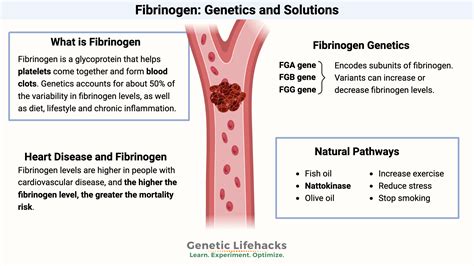
Factors Influencing Fibrinogen Levels
Several factors can influence fibrinogen levels, including age, sex, smoking, and obesity. For example, fibrinogen levels tend to increase with age, with higher levels observed in older adults. Women tend to have higher fibrinogen levels than men, particularly during pregnancy and menstruation. Smoking and obesity are also associated with elevated fibrinogen levels, which may contribute to the increased risk of cardiovascular disease observed in these populations.Normal Fibrinogen Levels in Different Populations
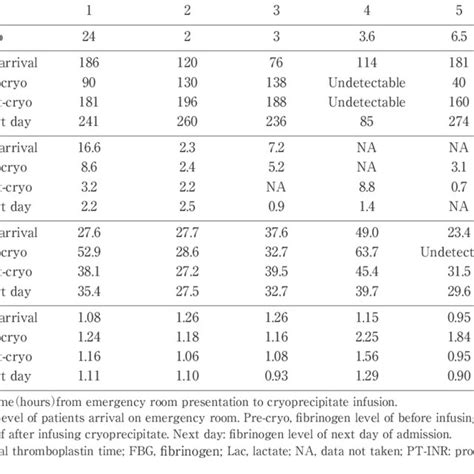
Clinical Significance of Fibrinogen Levels
Fibrinogen levels have significant clinical implications, particularly in the diagnosis and management of bleeding disorders, cardiovascular disease, and inflammatory diseases. For example, low fibrinogen levels may indicate a bleeding disorder, such as afibrinogenemia or hypofibrinogenemia, which can increase the risk of bleeding complications. Elevated fibrinogen levels, on the other hand, may suggest inflammation or cardiovascular disease, which can increase the risk of thrombotic events.Measurement of Fibrinogen Levels
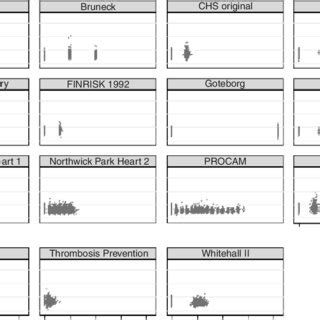
Interpretation of Fibrinogen Levels
Interpreting fibrinogen levels requires careful consideration of the clinical context, including the patient's medical history, physical examination, and laboratory results. For example, a low fibrinogen level in a patient with a bleeding disorder may indicate a need for fibrinogen replacement therapy. In contrast, an elevated fibrinogen level in a patient with cardiovascular disease may suggest a need for antiplatelet or anticoagulant therapy.Abnormal Fibrinogen Levels
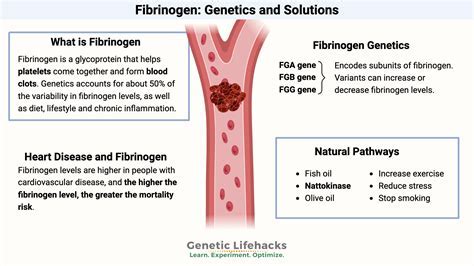
Causes of Abnormal Fibrinogen Levels
Several factors can contribute to abnormal fibrinogen levels, including genetic mutations, liver disease, cancer, and inflammatory diseases. For example, genetic mutations in the FGA, FGB, or FGG genes can cause afibrinogenemia or hypofibrinogenemia, which are characterized by low fibrinogen levels. Liver disease, such as cirrhosis or liver cancer, can also impair fibrinogen production, leading to low fibrinogen levels.Treatment of Abnormal Fibrinogen Levels
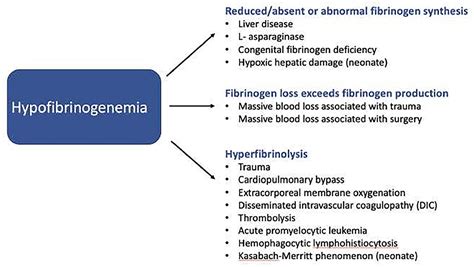
Complications of Abnormal Fibrinogen Levels
Abnormal fibrinogen levels can have significant complications, particularly in patients with bleeding disorders or cardiovascular disease. For example, low fibrinogen levels can increase the risk of bleeding complications, such as hemorrhage or hemarthrosis. Elevated fibrinogen levels, on the other hand, can increase the risk of thrombotic events, such as stroke or myocardial infarction.What is the normal range for fibrinogen levels?
+Normal fibrinogen levels are typically considered to be between 200 and 400 mg/dL.
What factors can influence fibrinogen levels?
+Several factors can influence fibrinogen levels, including age, sex, smoking, and obesity.
What are the clinical implications of abnormal fibrinogen levels?
+Abnormal fibrinogen levels can have significant clinical implications, particularly in the diagnosis and management of bleeding disorders, cardiovascular disease, and inflammatory diseases.
In conclusion, normal fibrinogen levels play a crucial role in maintaining hemostasis and preventing excessive bleeding. Understanding the factors that influence fibrinogen levels, as well as the clinical implications of abnormal levels, is essential for diagnosing and managing various health conditions. By recognizing the importance of fibrinogen levels, healthcare professionals can provide targeted treatment and prevention strategies to reduce the risk of bleeding and thrombotic complications. We invite you to share your thoughts and questions about fibrinogen levels in the comments section below. If you found this article informative, please share it with your friends and family to help raise awareness about the importance of fibrinogen levels in maintaining good health.
